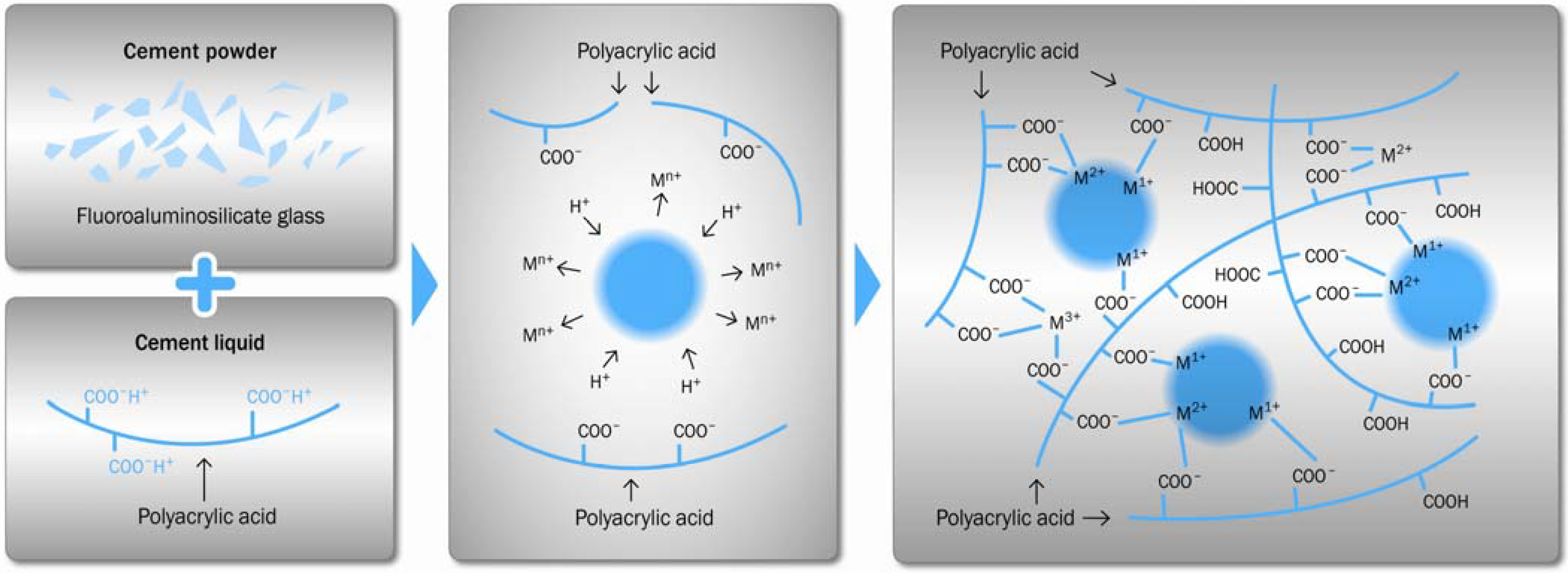| drug name | Resin-modified glass ionomer cement (RMGIC) |
| classification | Dental restorative material |
| pharmacokinetics | RMGIC is not absorbed systemically. It is a localized treatment and its effects are confined to the site of application. No specific pharmacokinetic data applies. |
| suggested dosage | Dosage is determined by the specific clinical application. The amount of material used is dictated by the size and complexity of the cavity requiring restoration. It is not a medication taken orally. |
| indications | Used for dental restorations, particularly in situations requiring fluoride release and/or chemical adhesion to tooth structure. Suitable for Class V restorations, pit and fissure sealants, and liners for caries prevention. It's used in children and adults to restore small cavities or improve the quality of a previous restoration. |
| safety in pregnancy | Limited data exists. Generally considered safe during pregnancy, as it is a topical application with no known systemic effect. Consult with a dentist for individualized recommendations in each situation. |
| safety in breastfeeding | Limited data exists. Generally considered safe during breastfeeding as it is a topical application. Consult with a dentist for individualized recommendations in each situation. |
| side effects | | 1 | Sensitivity (mild pain) during the initial 24-48 hours after placement. This is common. | | 2 | Slight post-operative discomfort at the site of application. | | 3 | Possible allergic reactions in individuals with a known sensitivity to the components of the cement. | | 4 | In rare cases, allergic reactions or local irritation can occur. |
|
| alternatives | |
| contraindications | | 1 | Known hypersensitivity to any component of the cement. | | 2 | Active infection or inflammation at the application site. | | 3 | Use with caution in patients with a history of sensitivity or irritation from dental materials. |
|
| interactions | No known significant drug interactions, as RMGIC is a local dental material. |
| warnings and precautions | | 1 | Proper technique is crucial to avoid complications and ensure long-term success. | | 2 | Adequate isolation and protection of soft tissues are needed. | | 3 | Post-operative instructions should be followed meticulously to prevent infection or complications. | | 4 | Proper handling and mixing techniques are essential. | | 5 | Proper isolation and protection of the patient is essential during use, to prevent contact with eyes or mucous membranes. | | 6 | Ensure the material is properly cured according to manufacturer instructions. |
|
| additional information | | 1 | Patient age and weight are not relevant factors for prescribing RMGIC as it's not a systemic medication. | | 2 | Material properties can vary based on brand and specific formulation. | | 3 | Proper handling and mixing procedures must be followed. | | 4 | The material should be used with caution in patients with a history of dental hypersensitivity. |
|
